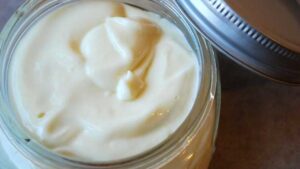Mandarins have been cultivated in China for centuries. According to some records, the fruit is so named because it was a traditional gift to the Imperial Chinese officials of the same name. Other sources point to a resemblance between the size, colour and shape of the fruit an the trimmings at the top of the officials' hats. The fruit was introduced to Europe in 1805, and to America half a century later.

The tree which the mandarin comes from (Citrus nobilis or C. reticulata) is small and evergreen, with glossy leaves and beautifully fragrant, white flowers. Unlike many other citrus fruits the mandarin has a loose skin and separates easily into segments.
Mandarin or Tangerine
Although we use the words 'mandarin' and 'tangerine' interchangeably, they actually denote two different varieties of loose-skinned orange. The tangerine is larger and rounder than the mandarin, with a more yellow skin, probably more like the original Chinese type. Mandarins are now grown in the Mediterranean regions of Europe an North Africa. Whereas the tangerine is produce mainly in Texas, Florida and California. Many hybrids have also been developed, including the tangelo (mandarin x grapefruit), the clementine (tangerine x sweet orange) and the temple orange (mandarin x sweet orange).
Health Benefits
Mandarin oil increases the local blood circulation which helps tone the skin and improve its texture. It is a mildly sedative oil. In France, because of its gentle action, mandarin essential oil is often thought of as 'the children's remedy'. French herbalists even prescribe mandarin juice for nervous tension and irritability, and certainly the essential oil can help quieten an over-excited child or encourage sleep. The soothing effect of mandarins (and tangerines) is attributed to their bromine content, which is higher than in any other fruit.
Unlike many essential oils which are distilled, mandarin is extracted by cold pressing of the fruit peel. The result is a golden yellow liquid, with an intriguing blue-violet tint that is visible in bright light.
The aroma is gentle, sweet and citrusy, just like the fresh fruit. The effect of inhaling it is generally soothing, gently uplifting and cheery.
The drawback with mandarin, and other cold-pressed citrus essences (except for bergamot), is that the oil deteriorates very quickly once exposed to the air. This may well account for occasional reports of skin reactions to mandarin and other citrus oils. Buy small quantities from a reputable supplier and use within sex to eight months of opening the botle.
In France, the essence is regarded as a safe internal remedy for indigestion and sleeplessness in the elderly and children, although no essential oils should be swallowed unless under the direction of a qualified practitioner. In aromatherapy, you can use mandarin as one of the main ingredients in massage blends, baths and blends for burners with similar benefits. A few mandarins eaten at bedtime can help promote restful sleep too.
A Tonic for the Skin

As well as its general skin care properties, mandarin essential oil is excellent in a skin tonic for oily skin.
Alternatively, when it's blended with a little chamomile or rose otto essential oil, in a base body or unperfumed lotion or carrier oil base, it becomes an effective, soothing and toning treatment for drier complexions. Mandarin essential oil is also commonly used in preparations designed to prevent stretch marks during pregnancy. Here it works best blended with other gentle skin-rejuvenating essences as neroli, lavender and rose.